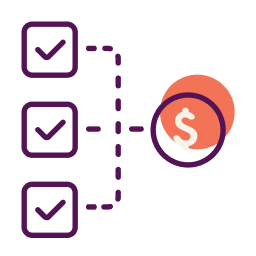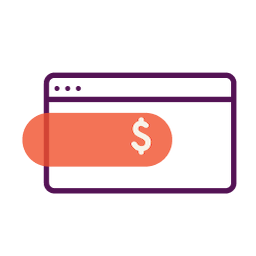Go from rejected to approved on your next business loan application.
It’s amazing how one piece of paper can have the power to open doors to your dreams, or close right in front of you, holding you back from what might have been.
When you receive a business loan rejection letter, you may feel like the door of opportunity has slammed solidly shut. There’s not a sliver of light escaping around the edges. Whether you’re launching a new business, looking for a way out of a sales slump, or trying to jump-start an expansion idea, being turned down for a loan feels like you’ve reached a dead end.
Rejection Stings
Though it’s little comfort in the moment, know that you’re not the only small business owner receiving this bad news. Small business financing remains 17 percent below the peak reached prior to the 2008 recession, according to a report published in January by the Federal Reserve Bank of Cleveland. According to the Associated Press, rejection rates for black and hispanic business owners are around 20 and 19 percent, respectively, and business loan rejection for other segments rests around 14 percent.
Despite the sense of despair you may initially feel, being turned down for a loan doesn’t necessarily mean you’re trapped without options. A business loan rejection may simply be another challenge on the road to entrepreneurial success. By shoring up any weak areas in your operations now, you’ll set your business on stronger footing for the long run.
Small Business Owners Face Greater Challenges
Survey data suggests loan approval rates overall are generally increasing. But the beneficiaries of the loosened purse strings are primarily large and medium-sized businesses targeted by bigger financial institutions. The Federal Reserve Bank of Cleveland report shows small business lending (loans under $1 million) remains low. Some experts, like Karen Mills, former administrator for the SBA, believe this is because there’s more profit for banks managing larger loans.
Is Your Business A Good Candidate for Credit?
In order to improve your future chances at qualifying for a loan, it’s important to understand the reasons behind the rejection. When you apply for a loan, both your personal and business credit histories will be reviewed to determine your creditworthiness. If you or your business has little credit history or, worse, a poor credit history, your application is more likely to be rejected.
Does your business have a steady income stream? Does your cash flow statement show sufficient margin between payables and receivables? Small business owners who plan to apply for a loan in the near future should remember the importance of maximizing earnings and keeping expenses low.
If your business loan rejection is primarily due to an unfavorable credit rating, you’ll need to repair your credit before applying again. Check your credit report for erroneous information, develop a plan to pay down debt consistently and on time, and be sure to stay well below your available credit spending limits. Over time, these steps will help to improve your personal and business credit scores.
What’s Your Plan?
So you had a big idea in your head, but not necessarily well articulated in your loan application? That may have been your key mistake.
In absence of a solid business plan, a lender lacks sufficient information about how you intend to use your financing to form an educated opinion about the viability of your goals. This lack of information can lead to a business loan rejection, even if your credit rating and other financials are in great shape.
Your subjective, romantic vision of a forward thinking business might gain you attention at a cocktail party, but it doesn’t show lenders any evidence of your repayment ability. Hand sketches on napkins or a couple of articles torn from a trade magazine aren’t substantial evidence of your calculated risk, projected timeline, knowledge of competition and market, and so on.
A well-formed, professional business plan is essential in demonstrating your own understanding of your business potential. In addition to a mission and vision, business model, and marketing strategy, your business plan should include a thoughtful forecast of your earnings potential and an expected break even point to demonstrate your clear understanding of what it will take to make your business financially viable.
What’s Next After Business Loan Rejection?
Like an athlete rallying back from a disappointing showing at last year’s competition, you need to take some time to assess and prepare before furthering your search for funding.
First, evaluate your business credit reports. Look for errors, address old or dormant accounts, and confirm timely payment. Next, improve your cash flow by reconciling past due amounts, minimizing spending, and maximizing sales. Build up a reserve that banks will look on favorably as a means of possible repayment.
If writing and Excel aren’t your thing, work with a friend or relative who can help turn your vision into an articulate plan documented with numbers and data. Consider ways to strengthen your relationship with a local lender or credit union, and contact your local Small Business Development Center for some hands-on advice.
Your recent business loan rejection may have closed one door, but that doesn’t mean there aren’t open windows nearby. With your hard work, you’ll be sailing through to the other side in no time, moving fast toward realizing your small business dreams.
This article was originally written on July 2, 2015 and updated on February 2, 2021.



Have at it! We'd love to hear from you and encourage a lively discussion among our users. Please help us keep our site clean and protect yourself. Refrain from posting overtly promotional content, and avoid disclosing personal information such as bank account or phone numbers.
Reviews Disclosure: The responses below are not provided or commissioned by the credit card, financing and service companies that appear on this site. Responses have not been reviewed, approved or otherwise endorsed by the credit card, financing and service companies and it is not their responsibility to ensure all posts and/or questions are answered.